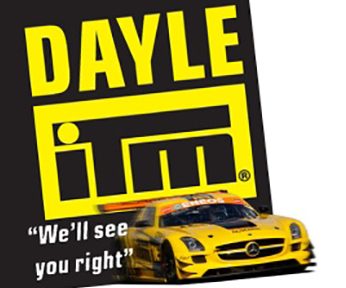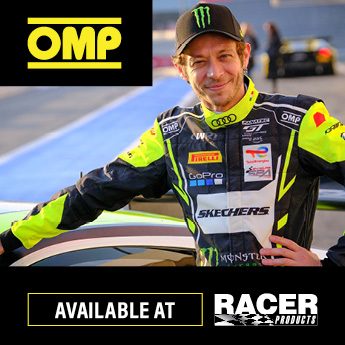Over the weekend Kiwis witnessed one of the greatest New Zealand Grand Prix races — and perhaps open-wheel races, period — in history. This was despite layers of occasionally silly tiffing in the build-up over things like date clashes, television rights, the GP’s shift in venue and a lack of international stars thanks to all this pandemic business.
The dramatic, unpredictable race that resulted at the end of it appeared to be cathartic for everyone that’s been a part of the traveling TRS circus for the last decade. It’s cliché, but perhaps out of the devastation of Covid-19 will come the opportunity to make a great event even better. Here’s six of our biggest take-aways from a weekend of excellent sports theatre.
1. Shane van Gisbergen is a freak

It’s one thing to have forecast that the defending Bathurst 1000 winner would quickly get his head around the Toyota FT-60 in short time. But it’s another thing to have witnessed him throw it around Hampton Downs with such abandon.
You could see his speed gradually rise from practice on day one (where he was mid-field) to slapping it on pole in first qualifying. Then in the race, it seemed like every corner of the Hampton Downs International Circuit was a passing opportunity — a theory van Gisbergen appeared to test as he carved through from a pit-lane start to a comfy two-second victory 28 laps later.
It’s the second time in a short period that we’ve watch him duck-to-water himself in a foreign car, following his rousing win at the Battle of Jack’s Ridge rallysprint last year. It’s gone beyond a ‘how can he adapt so quickly’ fashion of thinking in my mind. Now I find myself thinking more along the lines of ‘if he can do it so quickly, so seamlessly … why can’t the rest?’
2. TRS needs a ‘wildcard’ structure

The Castrol Toyota Racing Series is ordinarily a fairly healthy racing series, each overseas star’s contribution helping keep everything comfortably afloat. It’s therefore not necessarily a category that needs a huge crowd in the stands to justify its existence.
However, the huge attendance over the weekend (hell, there were spectators milling around on Friday — practically unheard of at a TRS meeting) will hopefully have organisers considering whether the idea of having a ‘wildcard’ car or two reserved for hot shots like van Gisbergen or Andre Heimgartner (or even maybe a Scott Dixon or Brendon Hartley) is feasible.
The series attracts the cream of the junior open-wheel formulae already, but the problem with these is that to Kiwi Joe Public they aren’t recognisable names. We’re not the US, where there’s an undercurrent of fans who enjoy watching tomorrow’s stars today (college football is huge in the States for this reason). Bringing household names to the event is, in my opinion, the biggest reason behind the significant crowd in the stands. That undeniable added atmosphere will stay with a lot of those spectators for a very long time.
3. These cars can pass

Even after its inaugural first season last year, the bigger-tyred, more-winged, halo-ified Toyota FT-60 was still a car we weren’t sure was capable of generating proper white-knuckle races for spectators. The outgoing weekend changed that.
Not only did van Gisbergen gut the field at any and every corner in the GP, but there were credible moves aplenty all through the grid. Some used the long straight between turns one and two to position for hearty dives under brakes, others would wait for opponents to slip up at the Double Bastard to sneak underneath at the subsequent hairpin.
Some of the greatest passing exchanges were for the minor placings. Van Gisbergen’s tit-for-tat with Brendon Leitch was fabulous viewing, as was the latter’s (eventually sour) dice with Heimgartner in race two. Plenty of optimism there for more great races with this platform.
4. The future is bright

Perhaps the next biggest point of discussion behind van Gisbergen’s antics were the success of the young bucks who made their debut over the weekend. Normally the ‘making it to the finish is victory enough’ adage gets applied here, but we had a rookie on pole for the Grand Prix, and we had another rookie score three podiums in a row.
Kaleb Ngatoa’s GP pole in greasy conditions was a stunning effort (thanks to the broadcast I’ll also now never forget that he’s from Marton). Fourth in every race, in any other instance, would be headline news at a TRS opener from a Kiwi rookie. Only, he got one-upped by Matthew Payne, who stepped up from karts to be a demon across the weekend with three straight podiums. If it weren’t for a few tardy starts he may have gone a place or two better, too.
With Billy Frazer, Joshua Bethune, and Conrad Clark all also enjoying solid weekends (had things gone wet, Clark may have snagged a GP pole), the category’s next homegrown generation look formidable to say the least.
5. Hampton Downs can still draw a crowd

While an audited crowd number has yet to be released by Grand Prix organisers, the weekend attendance was no less very impressive. Possibly the best crowd seen at Hampton Downs since the halcyon days of its annual Motorsport Festival events, or even the opening round of the V8 SuperTourers.
The Waikato venue has battled a reputation among some that its location struggles to rope in people from Auckland or Hamilton, despite the fact that the same can very much be said for any other venue in the North Island — such is the current motorsport landscape’s struggle (there’s generally no such issues down south).
The right event, the right drivers, the right mix of people behind the scenes are why this event was well attended. There’s no reason the same recipe can’t be used again.
6. Kenny Smith is a legend, but might be over and out in NZGP

Only losing one lap to the field across 28 circulations of one of the country’s longest race tracks is testament to Kenny Smith’s incredible talents. At 79-years-old he’s completed 50 New Zealand Grand Prix, with three wins across three different eras — up against some of the most incredible drivers in motorsport history.
It’s no secret that Smith isn’t terribly fond of the Toyota FT-60. Like Greg Murphy and others, he’s noted the awkward steering column placement and the amount of heave-ho required to make the car do what you want it to do. It’s good for the drivers wanting to take on Europe (apparently all the cars over there are like this), but it’s a huge learning curve and physical strain for those not used to it.
While Smith was coy about if this would be his last Grand Prix, mumblings trackside said it was most likely to be a swansong. Still, not a bad way to do it — as a starter at one of the greatest we’ve ever seen.

















Farewell Sir KEN
Agree with every thing you have said Matthew. We have to learn on what made this meeting a success.
The big crowd must relate to the NZ driver content. As much as we need the overseas drivers in nirmal years it just goes to show that you can promote NZ drivers and the crowd will come. Imagine if Nick cassidy, Scott Dixon, Brendon Hartley, Mitch Evans, Scott Mc, Marcos Armstrong and Liam Lawson were available, wow what a race that would be.
Well said. Crowd on Sunday was a stark contrast to last season’s Puke round. While racing enthusiasts appreciate seeing up and coming overseas talent on their way to F1 seats, they’re not household names when they do TRS.
Reserving some cars for Kiwi (and maybe some Aussie) established stars makes sense. As for HD, the accessible infield makes for great viewing, and I would say it’s location midway between Auckland and Hamilton is a plus.
Shane Van Gisbergen may be good, but a “freak”? It’s a reflection of how specialised drivers are nowadays. There was a time when drivers raced in Grands Prix, sports cars, saloon cars and anything else they got a chance at. To take just two drivers from back in the day, Jim Clark could win in just about anything, including rallying, and Graham Hill was World Champion in Grand Prix racing, won at Indianapolis and at Le Mans. More recently, Ayrton Senna did great at rallying, Colin McRae was pretty handy in an F1 car and there are many others.